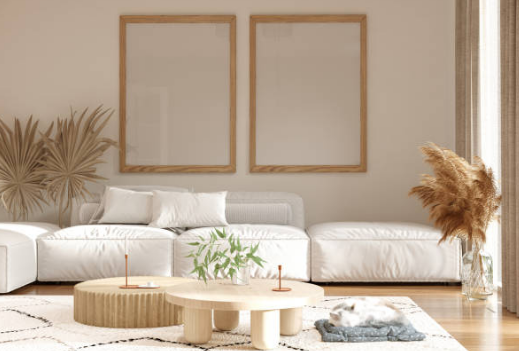
It’s really not that difficult if you want to give bottom water plants a try. If necessary, add some fertilizer to a bowl or saucer of room-temperature water. Simply place the plant in the container at this point and wait around 15 minutes. Continue reading, you will learn more about bottom water plants.
Table of Contents
What is Bottom Watering?
Bottom watering also referred to as reverse watering, is the process of hydrating your plant’s roots from the bottom up.
You should let the soil absorb liquid from the drainage holes in the bottom of the pot rather than pouring it on top of the soil of your container plants.
Wick watering is different from this. When you do that, you use a central container, like a bucket, to gradually wick moisture into nearby containers using ropes.
What’s All the Fuss With Bottom-Watering?
When you submerge a plant in water, also referred to as reverse watering, the soil and roots are allowed to absorb moisture from the bottom up.
It’s incredibly satisfying to watch the water level in the bowl decrease as the plants absorb the liquid, which is why people love to make time-lapse videos of the process.
Why would you proceed in such a manner? Evidently, watering your plants from the bottom as opposed to the top has a lot of advantages. Reverse watering ensures that the soil is saturated because sometimes top-watering causes water to run straight through the pot, which can prevent plants from developing strong root systems. Additionally, it’s a fantastic choice for indoor plants like African violets and snake plants that dislike having wet leaves.
What Are the Benefits of Bottom Watering Plants?
First of all, it can be very challenging to determine whether or not your plants have received enough water when you water them from the top. Because of this, Harli G., a plant expert, and YouTube content creator prefers the bottom watering method.
“I’ve watered my plants from the top so frequently that I’m sure the soil is completely saturated. I then let the water drip through to the saucer below. I’ll even give it a second dose sometimes and let it fill the saucer again,” she says. But lo and behold, when digging into the soil a bit, there are still dry parts. “In essence, gravity is pulling the water downward. It may not have much time to soak into the soil because of that.”
When the bottom is watered, that is not the case. Just place the potted plant—make sure it has drainage holes—into the bathtub, sink, or another container that has a few inches of water in it. The plant will have absorbed the precise amount it needs after 15 to 20 minutes—never too little or too much.
Additionally, there are some advantages to bottom-watering plants. One of them is that it works well for plants that quickly develop root rot. According to Harli, not top-watering prevents root rot and plant death because the roots aren’t sitting in an abundance of water.
Continue reading to find out how to correctly bottom water your plants if you want to stop soaking your poor plant babies unintentionally.

How to Bottom Water Your Plants?
What You’ll Need:
Potted plant
Bathtub, sink, or another container
Water
Instructions:
Add a couple of inches of water to your preferred container.
Put your potted plant in the water-filled container.
Remove the plant after 15 to 20 minutes, or as soon as the soil is damp on top.
your plant back into its dry saucer.
steps:
Making sure the pot is light enough for you to lift and carry is the first step. Remember that the plant will become heavier once the soil is saturated if you can barely move it when it is dry.
The bottom of the container must have drainage holes, which is the second prerequisite.
Some containers that you might purchase from the store appear to be made of two pieces that are attached or to be one pot with no catchment plate or tray.
However, before placing the plant pot in the liquid, you must remove it from the tray. Cachepots, which don’t have drainage, and planters with permanently attached drainage trays are both examples of objects that make this impossible.
Make sure your plant needs more moisture before you begin by checking. Stick a finger into the soil or use a moisture meter to determine the soil’s moisture level.
A bathtub, sink, big bucket, or another similar container can all be used to water plants. It can function as long as it is large enough to accommodate your plant container.
Why Use This Technique?
Once I spilled a whole watering can and it warped my hardwood floors. But in addition to architectural mishaps, I’ve also managed to drown my plants and regularly keep them underwater.
And don’t you dare say that I’m the only one who has overwatered to the point where the drainage plate overflows and you’re scrambling to grab a towel before the water runs everywhere. I don’t think so!
Let’s not even discuss the time I decided it was a brilliant idea to put a bunch of houseplants on my wire shelves above a collection of leather-bound books.

Additionally, top watering can hasten potting soil compaction, which is bad for the roots. As roots extend downward to access moisture, bottom watering encourages the development of deeper roots in plants.
Finally, if you have soil that has stopped absorbing liquid that is poured onto it, what is known as “hydrophobic soil,” bottom watering can help rehydrate the soil, and help the moisture to reach the roots of your plant.
Bottom watering allows the soil to soak up liquid if your soil has dried out and shrunk to the point where it has pulled away from the sides of the container, causing the liquid to run down the sides and out the drainage holes rather than through the potting medium.
What Happens If You Bottom Water Plants Too Long?
The main drawback of bottom watering is potentially overfertilizing your plant. Because the top layer of the soil isn’t being flushed away, minerals may accumulate, which may result in symptoms of nutrient excess or even chemical burns to the roots.
Is It OK to Bottom Water Plants Overnight?
by leaving it out in the open, ideally overnight, and exposing the roots. Until it dries up once more, you have allowed the plant to consume all the water it requires. This avoids the dreaded overwatering circumstance.
Conclusion on Bottom Water Plants
By setting the plant in a tray of water that is 1 to 2 inches high, bottom watering is accomplished. Following this, the water is allowed to drain freely, leaving the soil moist and aerated. The water is then absorbed into the soil from the bottom up.
An after-every-three-to-four-day watering of the bottom is recommended. As a result, the water in the soil has enough time to hydrate the plant and move the soil’s minerals into easily accessible positions for absorption. How quickly water dries out and how frequently it becomes bottom water is influenced by wind, humidity, and temperature.